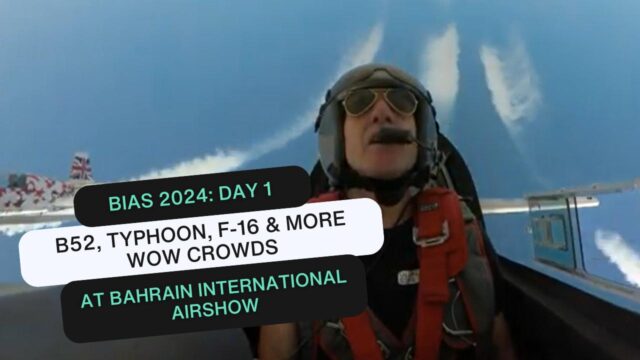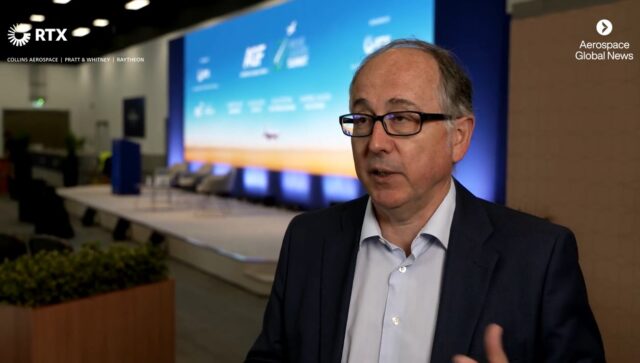From the Top: David Ziegler, VP Aerospace and Defence, Dassault Systèmes
David Ziegler, Vice President for aerospace and defence with Dassault Systèmes, talks to Alan Peaford on why pushing the boundaries of innovation is key to helping manufacturer survive the COVID-19…
David Ziegler, Vice President for aerospace and defence with Dassault Systèmes, talks to Alan Peaford on why pushing the boundaries of innovation is key to helping manufacturer survive the COVID-19 pandemic
While the aerospace world may still be in shock from the impact of the COVID-19. David Ziegler of Dassault Systèmes says the post-pandemic period will pave the way for new innovations and new technology as the world adapts to the “new normal.”
The aerospace and defence segment employs 17,000 people and works with companies such as Boeing and Airbus within commercial aviation side and Lockheed Martin and Dassault Aviation within the defence sector.
The company uses 3D modelling and simulation to create the company’s 3DExperience. During the COVID-19 pandemic, Dassault Systèmes has been using this technology for modelling systems and processes which will work to create greater confidence in flying to help get the people back in the air again and support a key sector for the world economy.
Critical for public to regain confidence in flying
He said: “For the public at large, it’s critical to regain confidence in travelling to restart the economy and contribute, of course, to the world exchanges. On our side, we’ve been in touch with several of our customers, both airlines and airports of this world to give them access to our solutions – essentially what we do for airlines.”
“They can use our simulation tools that are used in the commercial sector by airframers, and they can assess the circulation of air flow in the cabin and define the safe procedures that are needed to ensure safe flight. As far as airports are concerned, they can run simulations of air flow in their building to see what are the zones that are not covered by air flow by the ventilation and corner them off in order to ensure essential safety. They can also use the digital twin of their buildings to run scenarios on social distancing, and therefore reduce the delays on the impacts for board.”
Using digital twins to create smart airports
The digital twin concept – a digital replica of a living or non-living physical entity – is being used to help create smart airports around the world. Airports may be currently dealing with greatly reduced passenger numbers during the pandemic, but Ziegler said they are still working hard on implementing safety measures including establishing new hygience processes and procedures to ensure social distancing.
Ziegler explained how the system worked: “They’ve been cleaning and making sure that everything is ready for the passengers to fly again. So what is now at stake for them and for all the airports, is how to resynchronize operations, how to plan accordingly for the disruptions that may happen because of this new procedures. There will be a lot of test, trial and error. The digital twin here is helping them to run passenger flow optimisation for them to guarantee both the safety of passengers and ensure the maximum efficiency of their operations.”
Pandemic creates opportunity to improve long term processes
Ziegler believes there will be a “new normal” emerging after the pandemic. Although he says the businesses will suffer financially in the next 12 months, for airports and OEMs, it could mean the opportunity to improve long term processes. “So the crisis, while it’s very bad for the bottom line, will enable some airports to actually focus on their operational efficiency and maximise their profits when we come back to the new normal.”
Ziegler said there were still sectors such as space and defence which were seeing growth but the nature of the commercial aviation markets will change. “Now, when we’re talking about commercial aviation, the name of the game has changed. It’s not about managing the growth and the ramp up any more, but it’s to ensure resilience and flexible operations. So we see a lot of opportunities here for quality management, monetisation of factories and of course services in that field by applying artificial intelligence to flight operations data for example, we’re able to streamline the total cost of operations for operators. And, if we look a little bit into the future, that will also apply to different fields such as urban air mobility. So there are still a lot of great opportunities out there.”
Urban air mobility – the “new frontier” of aviation
Ziegler describes urban air mobility as the “new frontier for aviation.” The company is working with Uber Elevate, a flying taxi service which is pledging to take ridesharing to the next level. The project aims to send UberAir vertical takeoff and landing (VTOL) aircraft through the cities of Los Angeles, Dubai and Dallas-Fort Worth as soon as 2020.
Ziegler credits the urban air mobility market for bringing in – and reinventing – a wide range of innovations into the aerospace world. He said work was already underway on the regulatory framework for operations. Ziegler explains: “Whether we’re talking about the electrification of aircraft, hybrid technologies, the use of batteries, there are a lot of innovations in that ship. So we’re proud of course that our technologies supporting five out of the six participants in Uber Elevate, which is great achievements for our teams, and one there’s been already a lot of efforts from Civil Aviation authorities provided for framework for these operations.”
Startups no longer need the big infrastructures of OEMs
“There are still a lot of challenges for the startup to produce such rate and to become mainstream, but what’s interesting in that new field is that startups can now benefit from cloud solutions, enabling them to directly start operations without the big infrastructure for the OEMs. So they’re actually catching up very, very, very fast. And I’m really amazed about what these customers are doing.”
Throughout FINN’s From the Top series, we ask industry leaders what keeps them awake at night. Ziegler replied: “What really keeps me awake at night is to help our customers push the boundaries of innovation. And make sure that we help them invent new sustainable ways to make people fly. As you know, our company motto is really harmonising product, nature and life. So this is what keeps me awake at night – innovation.”



